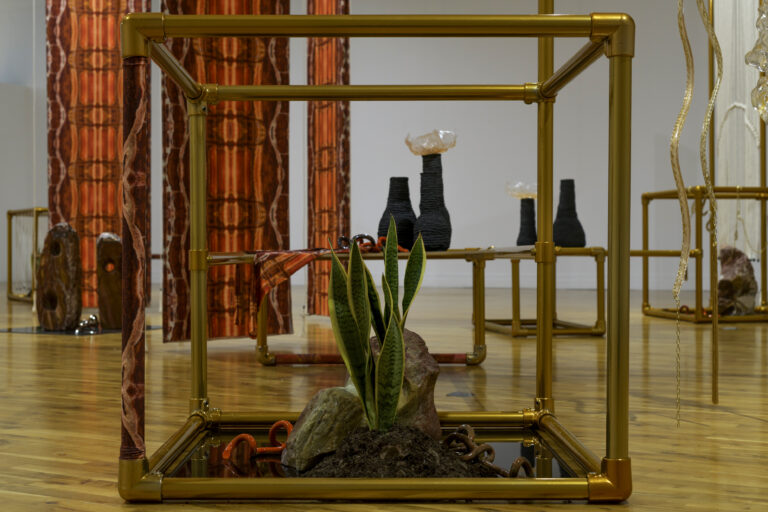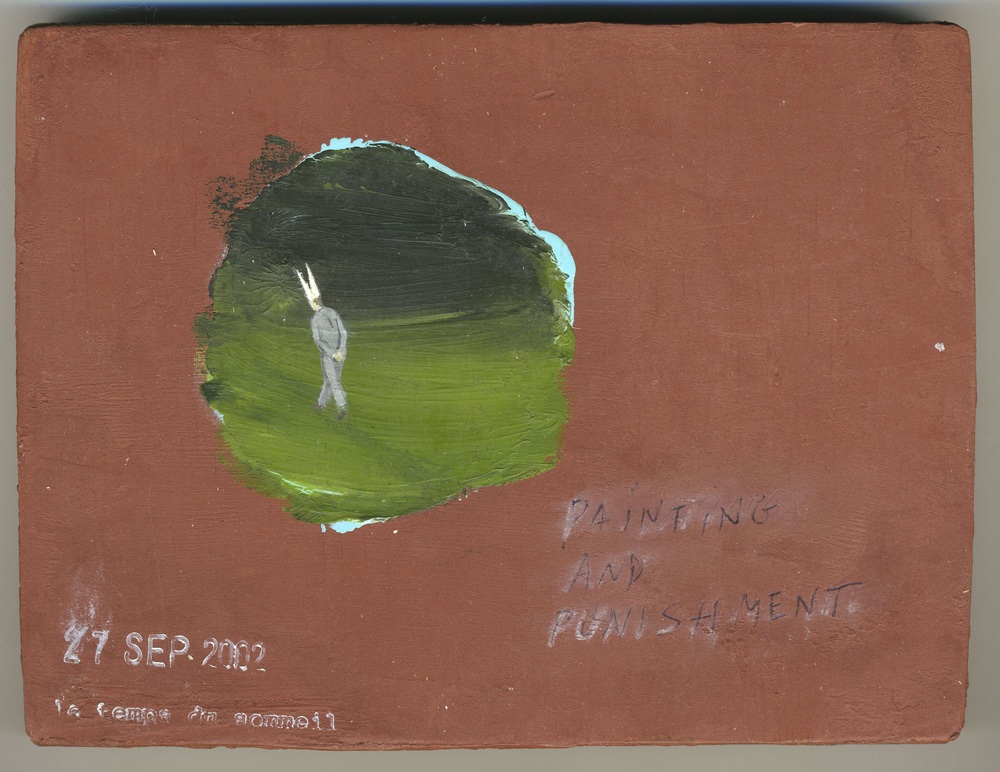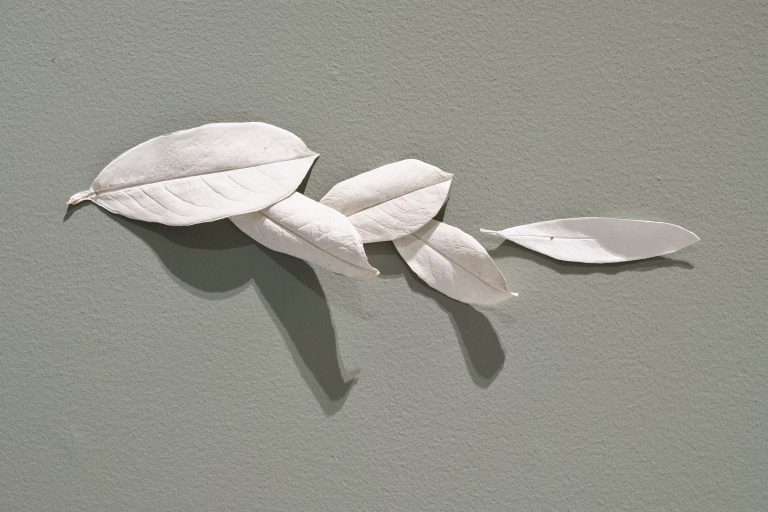Something Thrown and Caught presents us with a body of work using painting, installation, and drawing. Bennie Reilly expands on an already established interest in the natural world, reintroducing familiar motifs such as deer, owls, trees, and actual tree branches. There is also a new interest here in magnifying and investigating the intricate forms and patterns encountered in nature, portraying an altered visual interpretation of these. The title of the show stems from a passage from an essay by John Berger titled “A Professional Secret”, which suggests that drawing is a two way process: once our viewing of an image reaches a certain intensity we begin to ‘receive’ something from this image, as well as taking something from it, allowing us a new form of perception which goes beyond what is immediately decipherable. This theory surfaces in Reilly’s approach to creating her work and, in turn, we as viewers find ourselves stepping in close to scrutinise the images. This immediate sense of engagement draws us in from the first work we encounter.
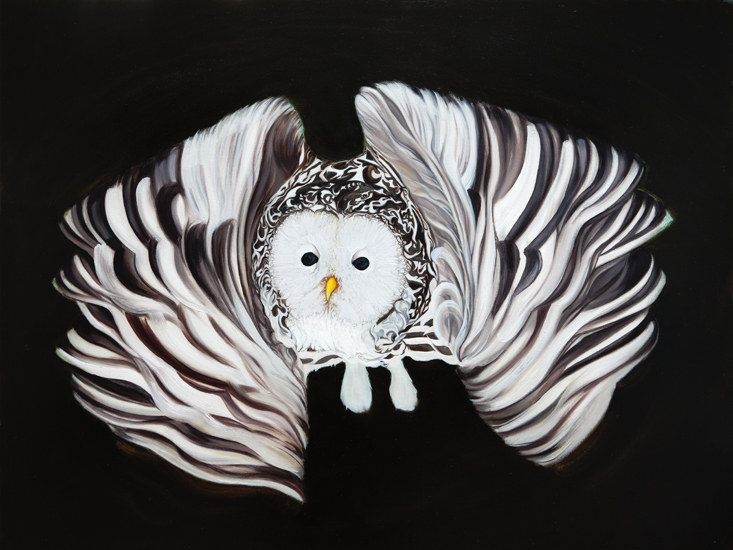
Bennie Reilly: Ural in Flight, oil on canvas, 60×70, 2012
Image courtesy the artist.
Bubble Beard is a beautifully executed painting of a polar bear underwater. Bubbles escape from the bear’s nose and mouth, but in this interpretation the amalgam of bubbles takes on a form of its own, resembling a beard of sorts. Closer inspection reveals the laborious line work that went into this detail. Our perception too is altered; the pattern becomes de-contextualised and our eyes become lost in it, following the intricate lines as they twist and curl. The closer we look, the stranger and more abstract this ‘beard’ becomes. Ural in Flight and Ural in the Snow take a similar approach; the particular patterns of the owls’ plumage seem magnified or exaggerated, and become as important as the owls themselves. Reilly’s visual interrogation of the natural world creates rhythm and order out of something so intricately and precisely composed; after a sustained period of scrutiny, these patterns become almost geometric in their boldness.
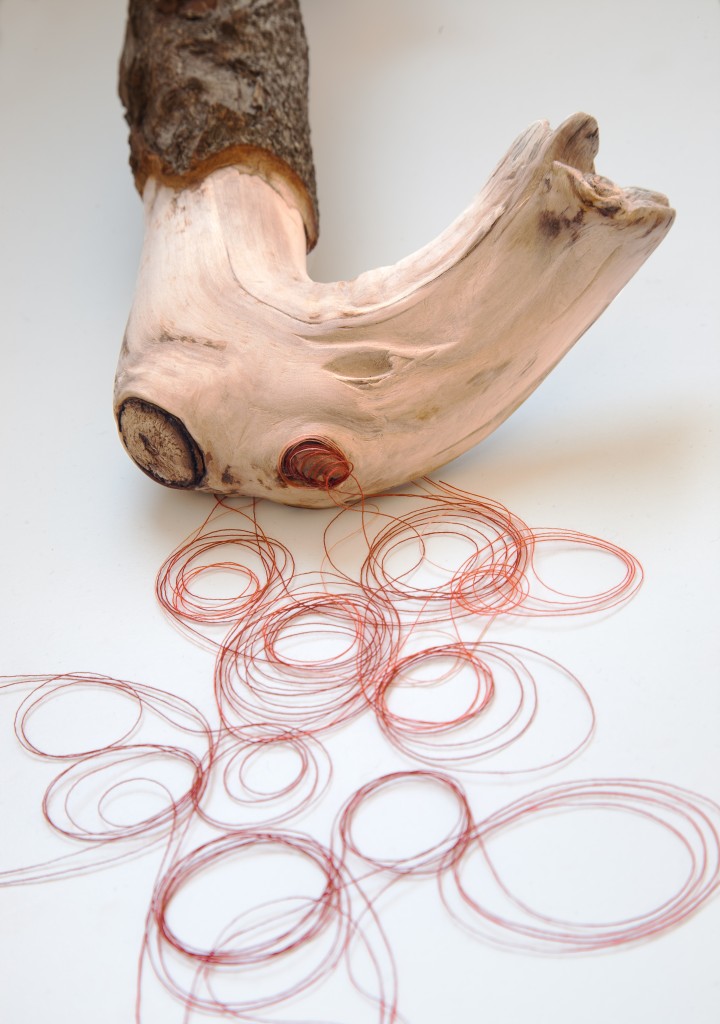
Bennie Reilly: Dead Horse, whittled branch and thread, 2012
Image courtesy the artist.
The term ‘Magic Realism’ has been associated with Reilly’s work. The collection of images and objects assembled in the gallery support this association by exploring an overlap between the believable and the extraordinary. In Creeping Cloud, a cloud assumes the shape of a tortoise. This vision is reinforced by the title of the work, which compares the cloud’s movement across the sky to a tortoise’s laborious progress. By drawing on forms we are familiar with, our mind’s eye can fashion clouds into shapes of animals or objects, echoing one part of the natural world in another. This phenomenon explores the fine balance between intense visual analysis of what lies before one’s eyes and our mind’s potential to adapt what we see to feed our imaginations. Here, the multi-layered possibilities of perception rooted in everyday reality is awakened. The title of the show Something Thrown and Caught implies a transition, a precise moment of realisation or understanding, and this collection of works together rouse in the viewer a sense of experiencing such a realisation; an acknowledgment of the power of the mind to transform.[1]
In a similar fashion, Dead Horse – a partly whittled tree branch – resembles the head of a horse in a position of some discomfort. Strings curl out from the ‘horse’s’ head, which in turn reflect the lines of the adjacent drawing of an old tree. Following a prolonged inspection, almost human features appear to emerge from the finely detailed lines, knots, and twists of its bark. Placement of the branch here lends tangibility to the drawing; a sort of link or stepping stone from the gallery space into these scenes from nature. This reoccurs in Antler Branch, where the antler-shaped tree branch tightly bound in green thread emulates the work next to it titled Deer Oh Deer. This painting intrigues us and we find ourselves stopping in our tracks to stare back at this animal, wondering about this knotted mass of netting and other debris tangled up in its antlers.
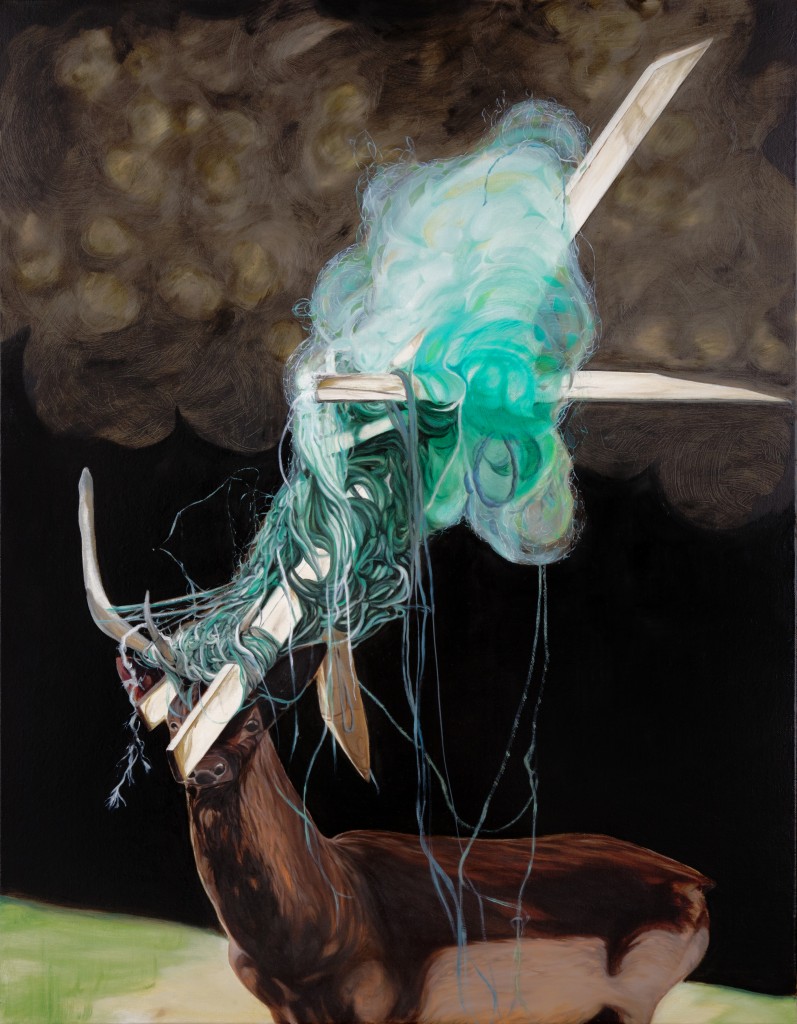
Bennie Reilly: Deer Oh Deer, oil on canvas, 90×70, 2012
Image courtesy the artist.
Reilly is an artist whose attention to her craft and process is very much apparent in her work, whether it be the meticulous precision with which lines and contours are executed, the care taken to reflect the textures present when portraying animals or the way in which the found objects are adapted to complement other works. Taking real life imagery as her starting point, she explores philosophies of subjective viewing experiences and how there can be more to the world than first meets the eye.
Roisin Russell is a writer based in Dublin.
[1] A noteworthy feature of Reilly’s drawings is the decision to feature a background sheet of paper behind the main sheet, adding a sense of depth to shading but also alluding to the concept of visual layering and that which lurks behind the initially visible. This technical measure supports the thematic celebration of the potential depth of visual experience.

